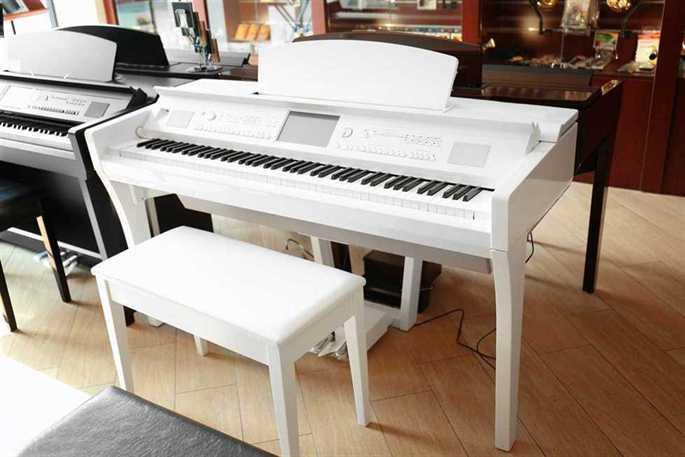
Deciding to learn to play the piano is an exciting endeavour. We’re glad that you’ve chosen to embark upon this journey, and we’re here to guide you through it. One of the first questions you’ll ask yourself is: which type of piano should I buy?
Depending on your priorities, one type may be better for you than another. Are you mainly concerned with your budget? Perhaps you are limited on space. You might have no idea where to begin, which is not a problem; this post is for you! We’re going to break down the differences between the main types of pianos on the market today. At the end of this reading, you will have a better idea of which one will be perfect for you.
Grand Pianos
This is the quintessential piano; when you picture a piano in your mind, you probably see one of these. They’re big, undeniably elegant, and pricey. The horizontal soundboard allows the hammers and dampers to reset with gravity; for that reason, pianists can play faster on a grand piano than on an upright. There are seven classifications of horizontal pianos, from a petit grand (53 inches/1.3 metres) to a concert grand (9 feet/2.7 metres) but most manufacturers only make three sizes: baby grand, grand, and concert grand.
Grand pianos offer excellent responsiveness and incredible tonal quality. Grand pianos allow pianists to have better control of the sound they produce. Music that comes from a grand piano is authentic, rich, distinct and loud. They can even sound louder when the top is raised up. The bigger the piano, the more sound it will emit. That is why concert grands are usually used in big music venues; the sound carries beautifully.
Grand pianos have three pedals that are used to change the tone, sustain a select note, or sustain sets of notes.
Upright Pianos
Also referred to as vertical pianos, these instruments require less space than their grand counterparts. Springs are used to reset the positions of the hammer and damper. This means that they function slightly slower than grand pianos and may require more upkeep. They’re easy to fit inside a home and can sit snugly against a living room or bedroom wall.
The pedals on an upright piano function differently than their horizontal counterpart; an upright piano has pedals that reduce the volume, mute the sound, and sustain every note.
Grand pianos and upright pianos are acoustic instruments, mostly made from wood. This means humidity levels can affect them quite a bit. It also means that you don’t require a power source to play them. Both horizontal and vertical pianos have wonderful virtues and a player will usually buy the kind that meets their room constraints and their budget.
Digital Pianos
If you’re looking for an affordable piano, digital versions are your best bet. They offer the most variety in terms of sound options, but they lack the authenticity of grand and upright pianos.
Digital pianos are much simpler to repair than acoustic ones. This is because they do not use hammers, dampers, or strings to produce music. Instead, the sound comes from speakers that play a pre-recorded note. Various soundboards can be programmed into the instrument; there are options to make it sound like an organ, wind instrument, or guitar. Digital pianos don’t require semi-annual tune-ups or other maintenance. Since they aren’t made of wood, they won’t be subject to damage from humidity fluctuations. If someone wants to play late at night or when other household members are working, they can plug headphones into the piano.
But for various reasons, seasoned piano players don’t always like electronic pianos. Some pianists miss the weight and resistance of acoustic piano keys; the way you need to strike them with force to produce a sound. The keys on digital pianos are often hollow and made entirely of plastic rather than wood or ivory. By tapping the key of an acoustic piano softly, the note will be gentle; a hard strike will emit a sharper tone. With digital pianos, it’s hard to replicate this nuance. A digital piano may have a sustain pedal, but it rarely includes the other add-ons like soft or sostenuto ones. Finally, they rely on a power supply to function, which can be a limiting factor (although some use batteries instead of electricity).
Are you looking for pianos for sale? Take a look at the selection on the Academy of Music website. We offer a range of pianos from digital to acoustic. If you’re curious about our pianos, or you’d like more information about a specific type, give us a call; we’ll be happy to answer your questions and point you in the right direction.


